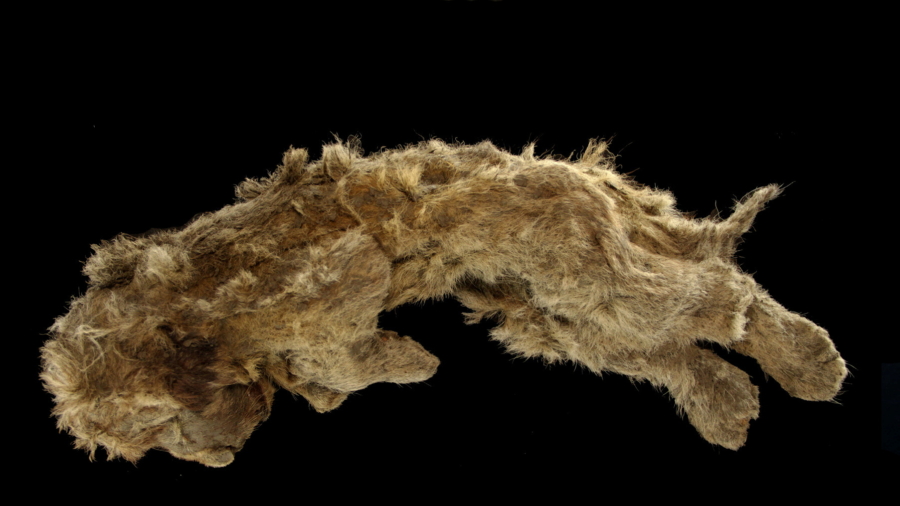Found frozen deep in the Siberian Arctic, the cave lion cub looks like she’s asleep and one touch might awaken her.
The cub’s golden fur is matted with mud but otherwise undamaged. Her teeth, skin, soft tissue, and organs are mummified but all intact. Some 28,000 years since she last closed her eyes, her claws are still sharp enough to prick the finger of one of the scientists who are studying this remarkable and unprecedented permafrost-preserved specimen.
The Siberian Simba, nicknamed Sparta, was one of two baby cave lions—extinct animals that used to roam widely across the northern hemisphere—found in 2017 and 2018 by mammoth tusk hunters on the banks of the Semyuelyakh River in Russia’s Far East.
Initially, it was thought the two cubs were siblings, as they were found just 15 meters (49 feet) apart, but a new study found that they differ in age by around 15,000 years. Boris, as the second cub is known, is 43,448 years old, according to radio carbon dating.
Sparta “is more or less undamaged apart from the fur being a bit ruffled. She even had the whiskers preserved. Boris is a bit more damaged, but still pretty good,” said Love Dalen, a professor at the Centre for Palaeogenetics in Stockholm, Sweden, and an author of a new study on the cubs.

Both cubs were just 1 or 2 months old when they perished, the study said. It’s not clear how they died, but Dalen and the research team—which includes Russian and Japanese scientists—said there were no signs of them being killed by a predator.
Computed tomography scans showed skull damage, dislocation of ribs, and other distortions in their skeletons.
“Given their preservation they must have been buried very quickly. So maybe they died in a mudslide, or fell into a crack in the permafrost,” Dalen said. “Permafrost forms large cracks due to seasonal thawing and freezing.”
The CNN Wire contributed to this report

